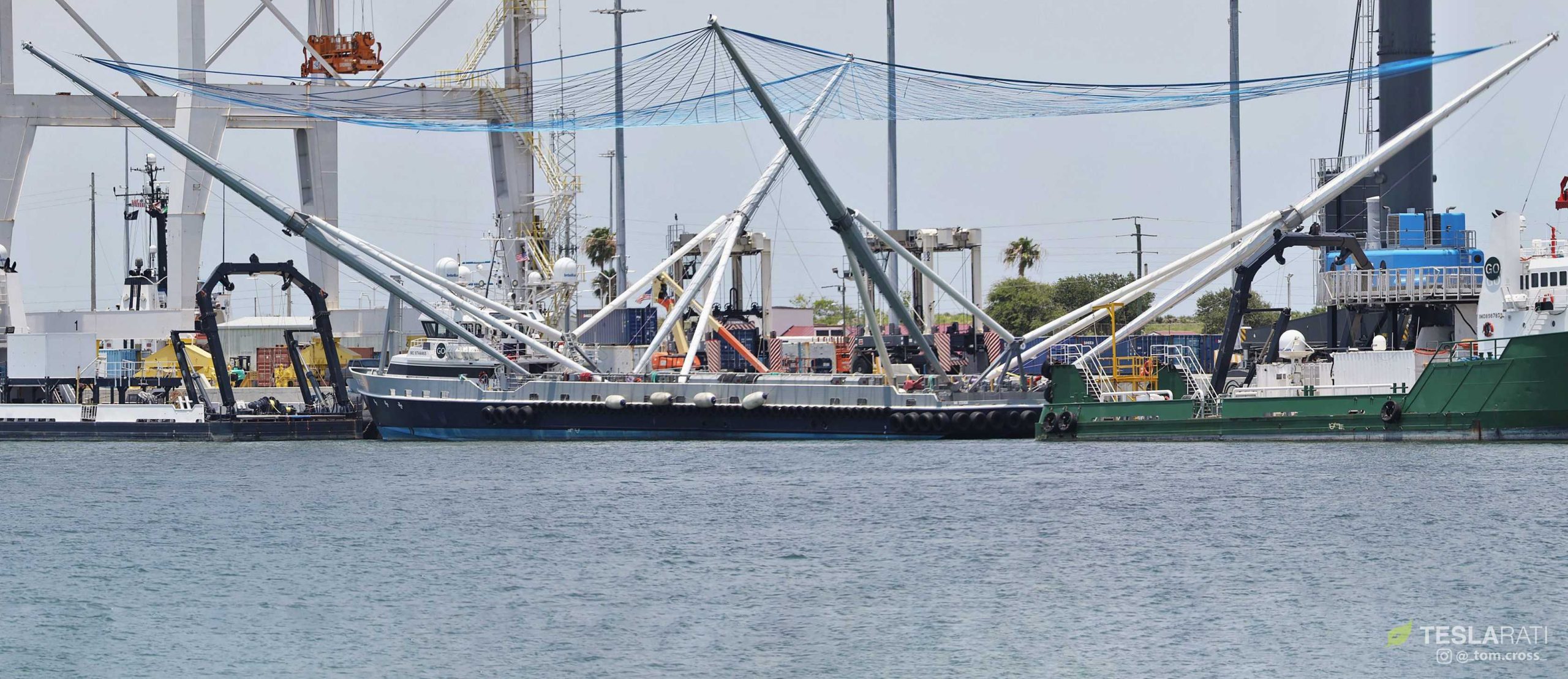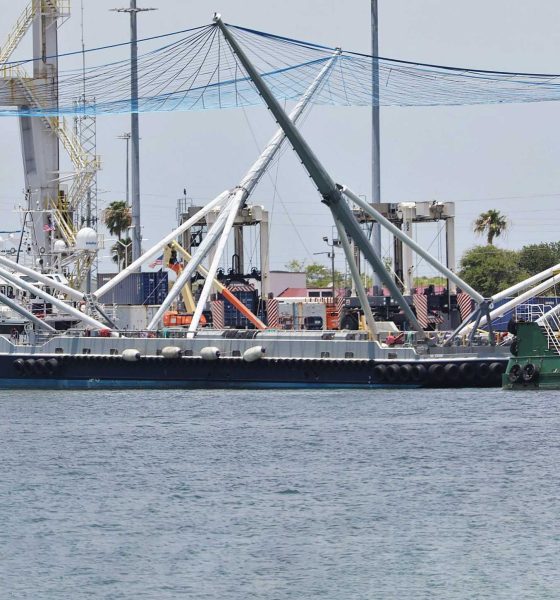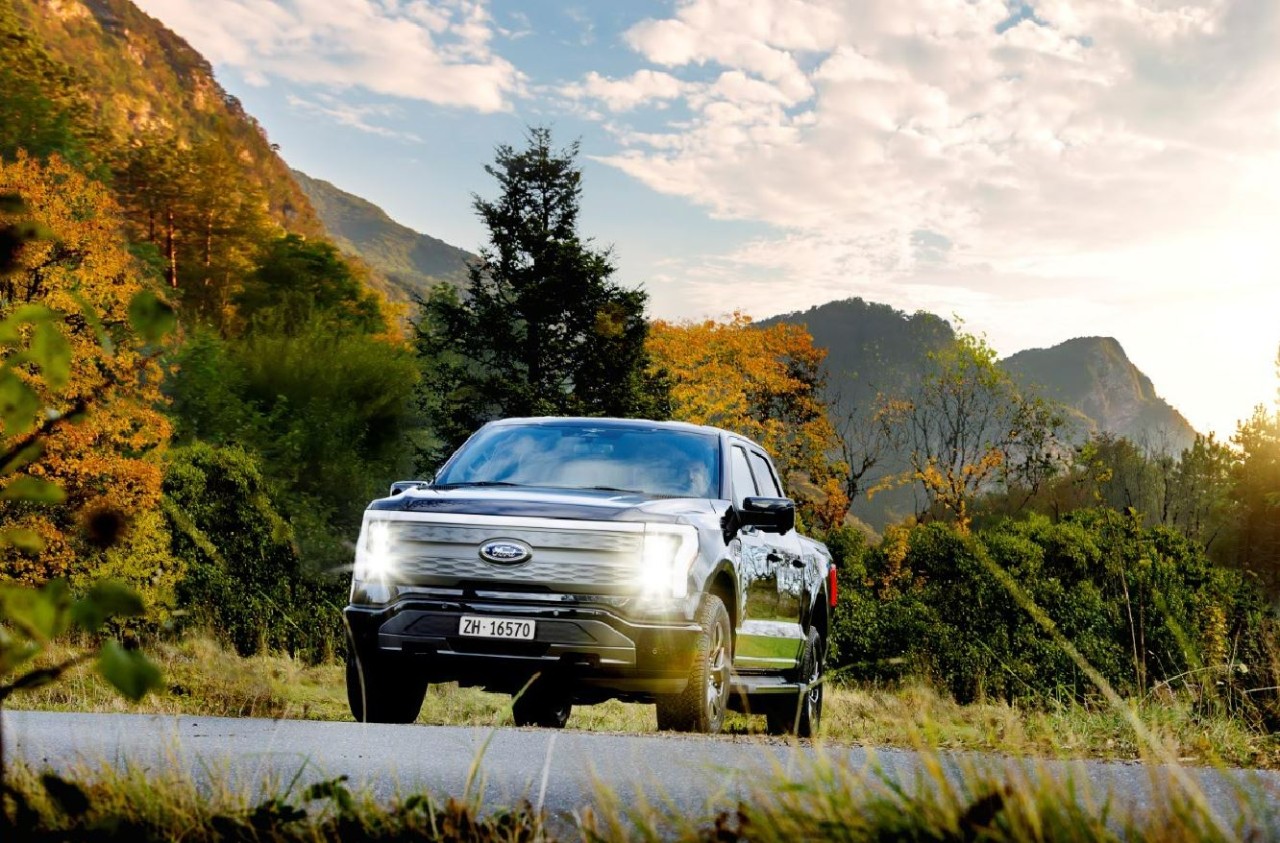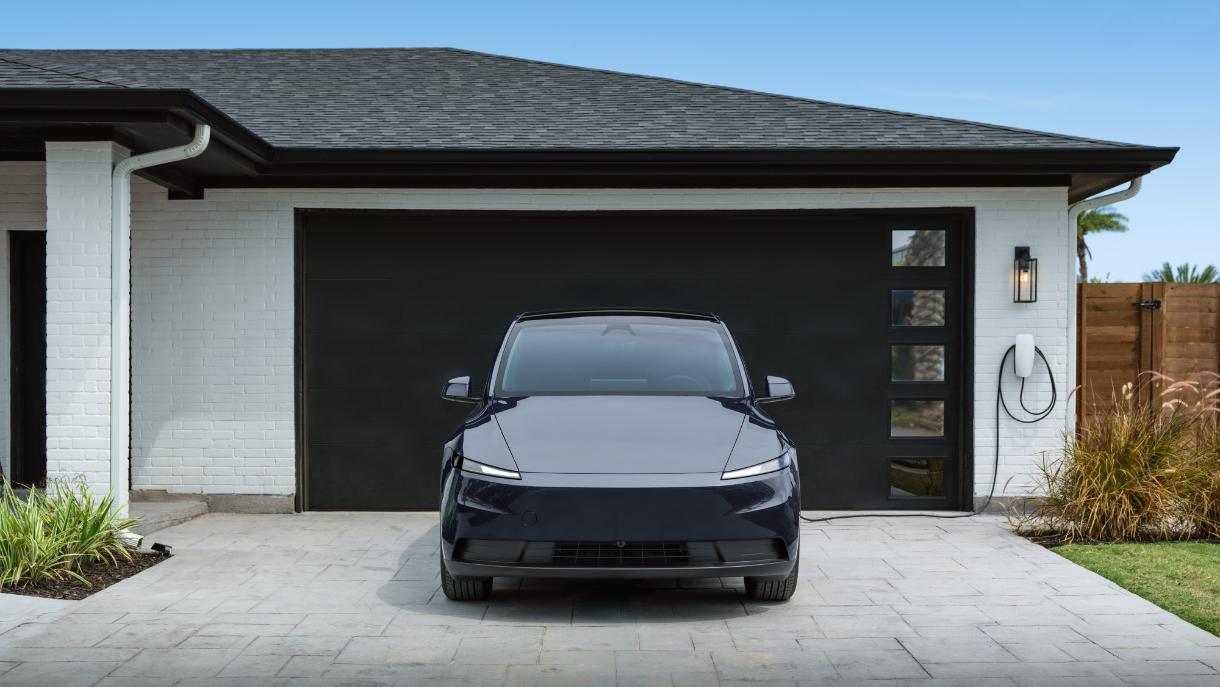

News
SpaceX’s Mr. Steven preparing for first Falcon 9 fairing catch attempt in months
SpaceX recovery vessel Mr. Steven has spent the last several weeks undergoing major refits – including a new net and arms – and testing the upgraded hardware in anticipation of the vessel’s first fairing catch attempt in more than four months.
Required after a mysterious anomaly saw Mr. Steven return to Port in February sans two arms and a net, the appearance of a new net and arms guarantees that SpaceX is still pursuing its current method of fairing recovery. Above all else, successfully closing the loop and catching fairings could help SpaceX dramatically ramp its launch cadence and lower costs, especially critical for the affordable launch of the company’s own Starlink satellite constellation.
The Saga of Steven
For a few months of 2019, it was entirely conceivable that SpaceX had all but given up on catching Falcon fairings, having spent the better part of 2018 without a single success during both post-launch and experimentally controlled catch attempts. Admittedly, a year may feel like a huge amount of time, but SpaceX has demonstrated just how hard the reliably successful recovery of orbital-class rocket hardware really is.
Depending on how one examines the history of Falcon 9, it took SpaceX anywhere from ~30 and ~70 months and either 7 or 9 failed recovery attempts before the first Falcon 9 booster successfully landed in December 2015. Excluding helicopter-based fairing drop tests, Mr. Steven and SpaceX’s fairing recovery team have made five attempts to catch fairings in the vessel’s net after Falcon 9 launches. All have been unsuccessful, with the closest miss reportedly landing in the Pacific Ocean just 50 meters away from Mr. Steven’s massive net.
In January 2019, Mr. Steven sailed ~8000 km (5000 mi) from Port of Los Angeles to Port Canaveral, passing through the Panama Canal. For unknown reasons, during a trip out to sea to catch a Falcon 9 fairing in February, Mr. Steven abruptly turned around early and arrived in port missing two of four arms, four of eight booms, and the entirety of its custom net. The remaining arms/booms were removed and the vessel spent roughly three months docked with just a handful of excursions.
In late May, technicians rapidly installed new arms and booms, as well as a new (and blue) net, bringing about the end of months of inactivity. Mr. Steven has yet to venture beyond the safety of Port Canaveral since its new ‘catcher’s mitt’ was installed, but SpaceX has been testing the new setup by repeatedly lowering a Falcon fairing half into the net. It’s too early to raise expectations but it seems plausible that the iconic recovery vessel will be ready to attempt its first fairing catch in ~4 months as part of Falcon Heavy’s next scheduled launch, currently NET June 22.
A challenger approaches…
Although Mr. Steven’s prospects look better than they have in months, SpaceX’s fairing recovery engineers and technicians have not been sitting on their hands. Begun as a check against the growing possibility that reliably catching fairings in a (relatively) small net is just too difficult to be worth it, SpaceX has been analyzing methods of reusing fairings without Mr. Steven. Most notably, despite the failure to catch fairings out of the air, the fairing halves themselves – relying on GPS-guided parafoils – have proven to be capable of reliably performing gentle landings on the ocean surface.
This consistently leaves the fairings intact and floating on the ocean but at the cost of partial saltwater immersion and exposure to surface-level sea spray and waves. At least in today’s era of highly complex large satellites, customers typically demand that payload fairings (like Falcon 9’s) offer a clean room-quality environment once the satellite is encapsulated inside. Sea water is full of salt, organic molecules, and water, all three of which do not get along well with extremely sensitive electronics. The whole purpose of recovering and reusing fairings is to make their reuse more efficient and less expensive than simply building a new fairing. The task of cleaning composite structures to clean room-standards after salt water exposure and immersion tends to be less than friendly to both aspirations.
According to SpaceX CEO Elon Musk, however, that challenge may be distinctly solvable and could even be easier than the Mr. Steven approach. After Falcon Heavy’s commercial Arabsat 6A launch debut in April 2019, Musk again confirmed that SpaceX would be ready to test that alternate method of fairing reuse very soon and plans to do so on an “internal” (i.e. Starlink) launch later this year. As noted below, this is helped by the fact that SpaceX’s internally-developed Starlink satellites apparently have no need for the acoustic insulation panels that normally protect sensitive spacecraft from the brutal acoustic environment produced by rockets while still in Earth’s atmosphere.
For fairing reusability, the lack of those panels is just one less thing to have to worry about cleaning or replacing. Intriguingly, it’s easy to imagine that – much like SpaceX has apparently designed Starlink satellites to be resistant to intense acoustic environments – the company could have also required that they be tough enough to tolerate a less-than-pristine fairing environment. With that approach, SpaceX could continue to build new fairings for every customer launch, entirely amortizing their production cost before transferring the ‘dirty’, flight-proven fairings to internal Starlink launches.
In essence, SpaceX’s customers would quite literally be paying the company to build the very Falcon 9 boosters and fairings it will ultimately use to launch its massive Starlink constellation, requiring hundreds of launches over the next decade. The faster and more efficiently SpaceX can build and launch Starlink, the faster it can develop Starship/Super Heavy and entirely transcend any concerns of salty fairings (let alone expendable upper stages). But in the meantime, Mr. Steven will return to his catching duties and SpaceX will continue to attempt to reuse payload fairings.
Check out Teslarati’s Marketplace! We offer Tesla accessories, including for the Tesla Cybertruck and Tesla Model 3.

News
Ford cancels all-electric F-150 Lightning, announces $19.5 billion in charges
“Rather than spending billions more on large EVs that now have no path to profitability, we are allocating that money into higher returning areas, more trucks and van hybrids, extended range electric vehicles, affordable EVs, and entirely new opportunities like energy storage.”

Ford is canceling the all-electric F-150 Lightning and also announced it would take a $19.5 billion charge as it aims to quickly restructure its strategy regarding electrification efforts, a massive blow for the Detroit-based company that was once one of the most gung-ho on transitioning to EVs.
The announcement comes as the writing on the wall seemed to get bolder and more identifiable. Ford was bleeding money in EVs and, although it had a lot of success with the all-electric Lightning, it is aiming to push its efforts elsewhere.
It will also restructure its entire strategy on EVs, and the Lightning is not the only vehicle getting the boot. The T3 pickup, a long-awaited vehicle that was developed in part of a skunkworks program, is also no longer in the company’s plans.
Instead of continuing on with its large EVs, it will now shift its focus to hybrids and “extended-range EVs,” which will have an onboard gasoline engine to increase traveling distance, according to the Wall Street Journal.
“Ford no longer plans to produce select larger electric vehicles where the business case has eroded due to lower-than-expected demand, high costs, and regulatory changes,” the company said in a statement.
🚨 Ford has announced it is discontinuing production of the F-150 Lightning, as it plans to report a charge of $19.5 billion in special items.
The Lightning will still be produced, but instead with a gas generator that will give it over 700 miles of range.
“Ford no longer… pic.twitter.com/ZttZ66SDHL
— TESLARATI (@Teslarati) December 15, 2025
While unfortunate, especially because the Lightning was a fantastic electric truck, Ford is ultimately a business, and a business needs to make money.
Ford has lost $13 billion on its EV business since 2023, and company executives are more than aware that they gave it plenty of time to flourish.
Andrew Frick, President of Ford, said:
“Rather than spending billions more on large EVs that now have no path to profitability, we are allocating that money into higher returning areas, more trucks and van hybrids, extended range electric vehicles, affordable EVs, and entirely new opportunities like energy storage.”
CEO Jim Farley also commented on the decision:
“Instead of plowing billions into the future knowing these large EVs will never make money, we are pivoting.”
Farley also said that the company now knows enough about the U.S. market “where we have a lot more certainty in this second inning.”
News
SpaceX shades airline for seeking contract with Amazon’s Starlink rival

SpaceX employees, including its CEO Elon Musk, shaded American Airlines on social media this past weekend due to the company’s reported talks with Amazon’s Starlink rival, Leo.
Starlink has been adopted by several airlines, including United Airlines, Qatar Airways, Hawaiian Airlines, WestJet, Air France, airBaltic, and others. It has gained notoriety as an extremely solid, dependable, and reliable option for airline travel, as traditional options frequently cause users to lose connection to the internet.
Many airlines have made the switch, while others continue to mull the options available to them. American Airlines is one of them.
A report from Bloomberg indicates the airline is thinking of going with a Starlink rival owned by Amazon, called Leo. It was previously referred to as Project Kuiper.
American CEO Robert Isom said (via Bloomberg):
“While there’s Starlink, there are other low-Earth-orbit satellite opportunities that we can look at. We’re making sure that American is going to have what our customers need.”
Isom also said American has been in touch with Amazon about installing Leo on its aircraft, but he would not reveal the status of any discussions with the company.
The report caught the attention of Michael Nicolls, the Vice President of Starlink Engineering at SpaceX, who said:
“Only fly on airlines with good connectivity… and only one source of good connectivity at the moment…”
CEO Elon Musk replied to Nicolls by stating that American Airlines risks losing “a lot of customers if their connectivity solution fails.”
American Airlines will lose a lot of customers if their connectivity solution fails
— Elon Musk (@elonmusk) December 14, 2025
There are over 8,000 Starlink satellites in orbit currently, offering internet coverage in over 150 countries and territories globally. SpaceX expands its array of satellites nearly every week with launches from California and Florida, aiming to offer internet access to everyone across the globe.
Currently, the company is focusing on expanding into new markets, such as Africa and Asia.
News
Tesla Model Y Standard stuns in new range test, besting its Premium siblings
Tesla’s newer vehicles have continued to meet or exceed their EPA estimates. This is a drastic change, as every 2018-2023 model year Tesla that Edmunds assessed did not meet its range estimates.

The Tesla Model Y Standard stunned in a new range test performed by automotive media outlet Edmunds, besting all of its Premium siblings that are more expensive and more luxurious in terms of features.
Testing showed the Model Y Standard exceeded its EPA-estimated range rating of 321 miles, as Edmunds said it is the “longest-range Model Y that we’ve ever put on our loop.” In the past, some vehicles have come up short in comparison with EPA ranges; for example, the Model Y’s previous generation vehicle had an EPA-estimated range of 330 miles, but only drove 310.
Additionally, the Launch Series Model Y, the first configuration to be built in the “Juniper” program, landed perfectly on the EPA’s range estimates at 327 miles.
It was also more efficient than Premium offerings, as it utilized just 22.8 kWh to go 100 miles. The Launch Series used 26.8 kWh to travel the same distance.
It is tested using Edmunds’ traditional EV range testing procedure, which follows a strict route of 60 percent city and 40 percent highway driving. The average speed throughout the trip is 40 MPH, and the car is required to stay within 5 MPH of all posted speed limits.
Each car is also put in its most efficient drive setting, and the climate is kept on auto at 72 degrees.
“All of this most accurately represents the real-world driving that owners do day to day,” the publication says.
With this procedure, testing is as consistent as it can get. Of course, there are other factors, like temperature and traffic density. However, one thing is important to note: Tesla’s newer vehicles have continued to meet or exceed their EPA estimates. This is a drastic change, as every 2018-2023 model year Tesla that Edmunds assessed did not meet its range estimates.
Tesla Model Y Standard vs. Tesla Model Y Premium
Tesla’s two Model Y levels both offer a great option for whichever fits your budget. However, when you sit in both cars, you will notice distinct differences between them.
The Premium definitely has a more luxurious feel, while the Standard is stripped of many of the more premium features, like Vegan Leather Interior, acoustic-lined glass, and a better sound system.
You can read our full review of the Model Y Standard below:
Tesla Model Y Standard Full Review: Is it worth the lower price?








